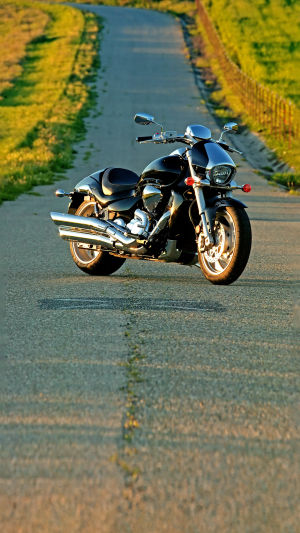Motorcycles, driven by internal combustion engines and steered through handlebars, are two-wheeled or three-wheeled vehicles known for their lightweight, agility, and swift manoeuvrability.
They find widespread use in activities such as patrol duty transporting passengers and goods and are also employed as equipment for sports.
In 1885, German inventor Gottlieb Daimler installed an engine onto a frame, giving birth to the world's first motorcycle. Motorcycle sports, associated with competitions, involve using motorcycles as athletic equipment.
These competitions feature two-wheeled and three-wheeled models, with various engine cylinder volumes determining different classes. Racing formats include off-road, multi-day, road, track, and touring races, with rankings based on speed or driving skills.
1884, British inventor Edward Butler added a power mechanism to a bicycle, creating a three-wheeled vehicle powered by kerosene. In 1885, German automotive pioneer Karl Benz's collaborator, Gottlieb Daimler, produced a three-wheeled motorcycle powered by a single-cylinder, air-cooled gasoline engine. He obtained a patent for this invention on August 29 of the same year, solidifying Daimler's recognition as the inventor of the motorcycle worldwide.
Daimler's first motorcycle utilized a four-stroke internal combustion engine with a working cylinder volume of 264 cubic centimetres, producing 0.5 horsepower at 700 revolutions per minute, achieving a top speed of 12 kilometres per hour. The vehicle had a wooden structure, a belt-driven rear wheel, and auxiliary support wheels on both sides.
In recognition of Daimler's indispensable historical role, a memorial was erected by the German Engineers' Association in Stuttgart after his death. This memorial stands on Canstatt's Huptmarkt Square, where Daimler rode his first motorcycle.
Since Daimler invented the world's first gasoline-powered motorcycle in 1885, the development of motorcycles has undergone significant transformations over more than a century.
The original motorcycle, now preserved in the Munich Museum of Science and Technology in Germany, reflects the primitive state of gasoline engines and vehicle manufacturing at the time. There are substantial differences in appearance, structure, and performance between the original motorcycle and modern motorcycles. The motorcycle's frame was made of wood, which is evident from the wood grain, resembling carpentry work.
The wheels were also wooden, with an outer layer of iron, and the frame featured several square wooden frames underneath to support the engine. With a working cylinder volume of 264 mL, the engine was cooled by a single-cylinder fan, and power output was transmitted through a belt and two-stage gear reduction to drive the rear wheel.
The seat was saddle-shaped and covered with leather. With a maximum power of 0.37 kW (at 700 rpm), it was only one-fifth of the power of a modern basic motorcycle. Its top speed was 12 km/h, marginally faster than walking. Lacking suspension and cushioning devices, this motorcycle was aptly named the "bone-shaker."
Imagining it traversing 19th-century cobblestone streets is undoubtedly more uncomfortable than torture. Despite its rudimentary nature, the original motorcycle marked the beginning of continuous innovation and improvement, leading to the evolution of modern motorcycles over more than a century and billions of descendants.
The global motorcycle market has maintained stability in recent years, primarily driven by economic growth in developing countries and increased consumer purchasing power. Meanwhile, developed countries' motorcycle markets emphasize personalized, high-performance, and environmentally friendly products.
With continuous technological advancements, the motorcycle industry has achieved significant breakthroughs in innovation, such as electric motorcycles and the application of intelligent technologies. These technological progressions have brought new growth opportunities to the industry.





